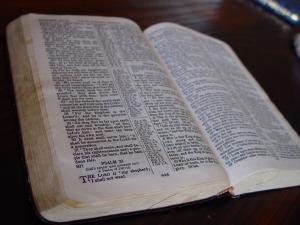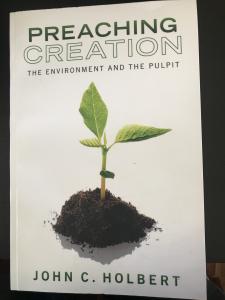(Lectionary for April 2, 2017)
Little wonder that the early Christian church jumped all over this text as they searched for claims in the Hebrew Bible that they felt matched their own emerging beliefs. Belief in the resurrection of Jesus was a central claim for the early communities, as any cursory look at the letters of Paul makes clear. “If Christ has not been raised, your faith is in vain and our preaching is void,” he thundered, or at least squeaked, if his own self-deprecating perceptions of his orating abilities are to be accepted. The notion that Jesus had in fact been raised from the dead by the power of God was apparently foundational for the very first Christian believers. No particular definition of exactly how and in what form that miracle had occurred was found universally acceptable—after all, each of the four gospels has a distinctly different notion of what transpired on that first Easter morning—but that Jesus was somehow alive in the world, or living with God for all eternity, or had been raised into the kerygma, as the more philosophical German theologians later affirmed, soon became a normative criterion for Christian belief.
In earlier blogs and articles, I have made it clear that I do not accept the idea of the bodily resurrection of Jesus; it strains my 21st century scientific mind beyond the breaking point. I do, however, most certainly find the narrative of the resurrection story to be determinative for my emerging Christian faith. That may not be enough for you, but it is far more than enough for me. We all swim in our stories, and that one is crucial for me: death is never the last word for the God we worship and love. Or as Frederic Buechner’s Godric says it: “All the death there is, set next to life, would scarcely fill a cup.” Amen, say I. And given that understanding of the matter, Ez. 37 can come more fully into play.
One thing is immediately certain: Ez. 37 is not referring to some sort of personal resurrection. Ez. 37:11 makes that th oroughly impossible as the prophet explains to his readers that “these bones are the whole house of Israel.” In other words, the text is a parable of sorts, an extended metaphor describing the future of Israel, a land currently characterized as a “valley of dry bones.” The fate of that land was very much in doubt after the initial exile of Israel’s leaders to Babylon in the year 597BCE. Though it can hardly be proven definitively, it is often surmised that the prophet Ezekiel was included in the first wave of deportees in that year, spending the remainder of his days among the Israelite exiles at the river Chebar in and around the great capital of the Babylonian empire. From there, he looks back at the city of Jerusalem, soon in just ten years to be decimated by an enraged Nebuchadnezzar, and wonders whether it and his people have any real future at all.
oroughly impossible as the prophet explains to his readers that “these bones are the whole house of Israel.” In other words, the text is a parable of sorts, an extended metaphor describing the future of Israel, a land currently characterized as a “valley of dry bones.” The fate of that land was very much in doubt after the initial exile of Israel’s leaders to Babylon in the year 597BCE. Though it can hardly be proven definitively, it is often surmised that the prophet Ezekiel was included in the first wave of deportees in that year, spending the remainder of his days among the Israelite exiles at the river Chebar in and around the great capital of the Babylonian empire. From there, he looks back at the city of Jerusalem, soon in just ten years to be decimated by an enraged Nebuchadnezzar, and wonders whether it and his people have any real future at all.
His chapter 37 is his answer to that searching and desperate question. The story is a grim one. YHWH’s hand grabs the prophet, no doubt in a sort of trance state, and leads him into a valley filled with dry bones. In his wildly prophetic mind’s eye, Ezekiel wanders around the grisly bones in a horrified silence. Out of the silence YHWH asks a question that turns out to be the question of the resurrection. “Mortal, can these bones live” (Ez. 37:3)? And Ezekiel’s initial response is ours; “Ah, YHWH God, you know” (Ez. 37:3)! And by implication, I surely do not know! It appears to me by all real signs that the life of Israel has come to an end. And along with that end comes the end of the promises of YHWH, those promises of land, temple, kingship, and the great promise of blessing to the nations given to the patriarchs and matriarchs at the very origins of the community centuries before.
In exactly the same manner with the miserable and agonizing crucifixion of Jesus of Nazareth, it appeared that the flowering of the new community had come to a bloody halt. It surely appeared that way to those two budding disciples on the road to Emmaus in Luke 24. “We thought he was the one to redeem Israel,” they wail (Luke 24:21), but he turned out to be just another of the failed prophets. Of course, in that grand narrative, the one to whom they are wailing is none other than the previously dead one himself, whom they soon recognize when they share a meal with him. And so the celebration of the eucharist becomes still another way to commemorate the resurrection story.
“Ah, YHWH God, you know.” Indeed. Only God knows, and only the power of God can find life when all we see is death. I would suggest that the need that many still have to believe in an actual historical, bodily resurrection is rooted deep in the idea that only historical facts can finally be true. This is a gross trivialization of the power of story in our lives. A very recent example makes the point.

 (Lectionary for April 2, 2017)rical facts may finally be real and truthful. This, I find, is a deep trivialization of the power of story and narrative in each of our lives. Stories are what form and shape us into the people we are and want to be. I think now of a very current, and decidedly negative, example.
(Lectionary for April 2, 2017)rical facts may finally be real and truthful. This, I find, is a deep trivialization of the power of story and narrative in each of our lives. Stories are what form and shape us into the people we are and want to be. I think now of a very current, and decidedly negative, example.President Donald Trump has just yesterday (March 30, 2017) signed an executive order lifting the restrictions on the mining and use of coal as a source of power production in the USA. President Obama had made it very difficult to mine coal as a part of his clean power initiative, turning our economy toward other energy sources like wind and solar and natural gas in order to slow the rapid heating of the planet due to global warming from fossil fuels. President Trump trumpeted (if you will pardon the expression!) his rejection of his predecessor’s goals as a way to return jobs to the coal producing areas of the country, especially perhaps the hardest hit state, West Virginia. “Go back to work now, “shouted Trump, as he signed his order in the presence of some miners.
Then today, an article appeared in the New York Times, outlining just what this order will do for West Virginia. It turns out that fewer than 5% of West Virginian jobs involve the mining of coal, while over 22% of the citizens of that state are involved in health care and social services. The now defeated Trump care act, designed to remove and replace the Affordable Care Act, would have devastated the health and human service sectors of West Virginia, offsetting by many times the few coal mining jobs that Trump’s new order will make possible.
The point of these facts is that the story that West Virginia tells itself and the rest of the country is: “we are coal miners and this is coal country.” The story has little to do with the reality of 21st century West Virginia. Here is a clear example that the story we tell is far more significant than the life we actually live.
Hence, the story of the resurrection is far more powerful than any search for its factuality. And the story means, in both testaments, that God can always find life in the midst of death. There is at last no death so dead that God cannot find life in it. There is the real resurrection for Jews and Christians; the power of God ultimately prevails. There is the reason for an Easter worth the singing and shouting!
Images from Wikimedia Commons











